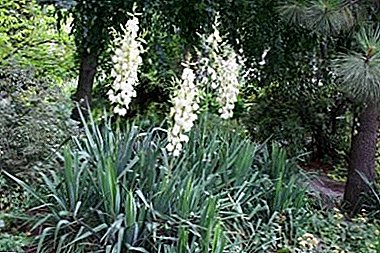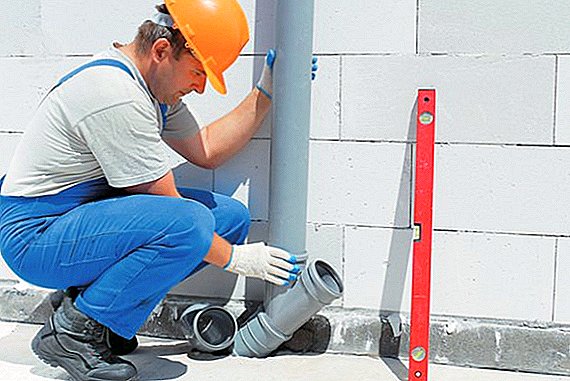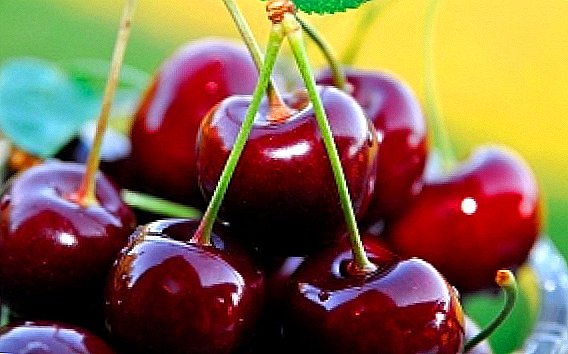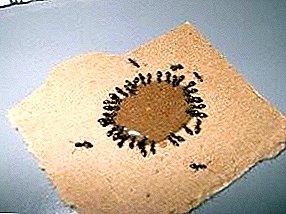 Fascinating houseplant with bright colors of unusual shape, which seem plastic from a distance, is called anthurium. Tight-looking flowers, thanks to their exotic, called "flower flamingo."
Fascinating houseplant with bright colors of unusual shape, which seem plastic from a distance, is called anthurium. Tight-looking flowers, thanks to their exotic, called "flower flamingo."
Optimal growing conditions
In order for the plant to please you not only with bright foliage, but also with beautiful flowers, it is necessary to fulfill all the conditions for its cultivation.
The composition of the soil for anthurium
 For planting indoor anthurium use soil mixture, which consists of humus, leaf soil, peat and sand. All components must be in proportion of 2: 1: 1: 0.5.
For planting indoor anthurium use soil mixture, which consists of humus, leaf soil, peat and sand. All components must be in proportion of 2: 1: 1: 0.5.
To increase the water and air permeability, about 15% more bulky fillers are added to the soil mixture: cones, pieces of brick, charcoal, and peat moss. The soil should be slightly acidic - PH from 5.5 to 6.5.
The soil mixture can be prepared from a mixture of soil for flowers and a substrate for orchids in equal proportions. Positive is the addition of moss.
Air temperature and humidity
Since Anthurium is a tropical plant, sharp fluctuations in temperature are undesirable for it. The plant feels good at a temperature of 20-25 ° C. In winter, temperatures should not be below 16 ° C.
Anthurium prefers high humidity and does not tolerate drafts, so the spraying of foliage should be carried out regularly.
Important! Do not spray the inflorescences of anthurium, as they appear on the spots, and this adversely affects the duration of flowering.
 To increase the humidity of the air, sphagnum moss is placed in the top of the pot. It retains moisture well and stimulates the growth of aerial plant roots. Also, to increase the humidity with the plant next to it, you can keep the dishes with water, the evaporation of which will bring the climate on the windowsill closer to the tropical one.
To increase the humidity of the air, sphagnum moss is placed in the top of the pot. It retains moisture well and stimulates the growth of aerial plant roots. Also, to increase the humidity with the plant next to it, you can keep the dishes with water, the evaporation of which will bring the climate on the windowsill closer to the tropical one.
Proper lighting
The plant is rather shade-tolerant, but for normal growth and flowering you need bright lighting without direct sunlight. In the shade anthurium will grow, but blossom - no.
The lack of lighting affects the flowering, although the plant does not tolerate direct sunlight. In winter, additional light can be used for flowering.
How to care to bloom anthurium
If you properly care for anthurium, it will delight you with bright foliage and colorful flowers. Anthurium refers to the capricious plants.
It may feel normal on your windowsill, but not bloom. Consider the factors that may affect the lack of flowering:
- Big pot. Perhaps you "took care" of your plant and transplanted it into a large pot so that it was spacious. However, this is a mistake, because the closer your plant, the faster it will bloom.

In a large pot, you can only get gorgeous foliage. When choosing a pot, be guided by the fact that it should not be free, but should be wide.
- The annual replacement of the substrate also favorably affects the flowering of the plant.
- Incorrect conditions of detention.
Proper watering the soil
The plant needs a temperature of 18-20 ° C to set the flower bud. Therefore, if the anthurium is located near the central heating battery, then this negatively affects the flowering process. Humidity should be high, but make sure that excessive watering does not lead to rotting of the roots.
It is necessary to water the plant with warm water every 3-4 days, in the winter time watering is reduced to once a week. Anthurium reacts both to excessive watering and dry soil with yellowing sheets.
 If after watering in the pan water remains, then it must be drained after half an hour.
If after watering in the pan water remains, then it must be drained after half an hour.
The necessary conditions for proper irrigation is warm water that does not contain lime, since the anthurium prefers a slightly acidic substrate.
Top dressing
In the process of flowering, an important role is played by fertilizing the plant with fertilizer for flowering anthurium. Here the main thing is not to overdo it. To do this, conduct dressing regularly, but the concentration of the solution recommended in the instructions should be reduced.
Important! Top dressing is carried out in the warm time twice a month and in the winter once a month.
In order to effectively feed for anthurium at home, it is necessary to alternate mineral and organic fertilizers. Feeding a young plant can be done only after full rooting.
If the plant is sick, then feeding must be suspended. The plant needs rest and recovery.
Did you know? There are ways to stimulate flowering. To do this, in early spring water the plant with warm water (40-50° C). This will trigger the flowering. But it should be remembered that the plant should rest from flowering and have time to grow foliage. Constant stimulation of flowering can lead to its death.
Plant rejuvenation
 The old plant loses not only a decorative appearance, but also ceases to bloom.
The old plant loses not only a decorative appearance, but also ceases to bloom.
If your anthurium gives a lot of lateral shoots either turned into a shrub with small foliage and small flowers, or has only one rosette of leaves on the trunk covered with remnants of old leaves, then all these signs indicate the need rejuvenate the plant.
The rejuvenation process is quite simple. Since the anthurium has aerial roots, it is necessary to cut off the top of the plant with 2-3 aerial roots and plant it in the soil..
For a cut plant, watering must be reduced, and after a while, side rosettes of leaves will appear. When they grow up, the flower can be propagated by dividing the bush.
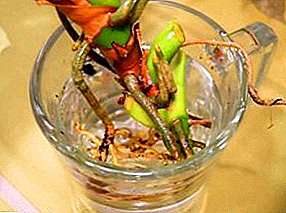 If you want to rejuvenate the plant, but it does not have aerial roots, they must first be grown. To do this, the bare part of the stem in the places of the beginnings of aerial roots is wrapped with sphagnum moss and regularly moistened. The roots will sprout through the moss very quickly, and this will allow rejuvenation to take place without any risk of losing the plant.
If you want to rejuvenate the plant, but it does not have aerial roots, they must first be grown. To do this, the bare part of the stem in the places of the beginnings of aerial roots is wrapped with sphagnum moss and regularly moistened. The roots will sprout through the moss very quickly, and this will allow rejuvenation to take place without any risk of losing the plant.
Safety rules for the care of a poisonous flower
Anthurium refers to poisonous plants. Therefore, care should be taken that children or pets do not chew the leaves and fruits of the plant. Signs of poisoning can be vomiting, diarrhea or dermatitis of the skin.
Replanting the plant, the skin of the hands can be protected with rubber gloves, and after caring for them, do not forget to wash your hands thoroughly with soap and water.
If the sap of the plant comes into contact with the skin or into the eyes, it is necessary to rinse these areas with plenty of water. If parts of the plant are in the stomach, it is necessary to induce vomiting to remove them and drink absorbents. In case of severe symptoms of poisoning, call an ambulance.
Although anthurium is poisonous, it belongs to recognized air purifiers.
Did you know? Anthurium protects people born under the sign of Leo. He gives them love, happiness and stimulates them to creativity.
How to transplant anthurium
 The young plant must be replanted annually, and the adult - once in 3 years. If this is not done, the leaves of the plant will turn black, and the flowers will soon wither.
The young plant must be replanted annually, and the adult - once in 3 years. If this is not done, the leaves of the plant will turn black, and the flowers will soon wither.
Anthurium transplantation must be carried out in the following sequence:
- Remove the flower from the old pot at the base of the stalks and remove the ground between the roots. This can be done with a wooden stick, and then under a stream of running water.
- If necessary, remove damaged roots. Slices sprinkle with activated charcoal or cinnamon. To stimulate root growth, you can soak the plant roots in a solution of any stimulant for 2 hours.
- Place a drain on the bottom of the pot. It will prevent rotting of the roots with excessive watering.
- Putting a small layer of soil in the center of the pot, place the flower. Straighten the roots and cover them with earth. The soil layer above the roots must be at least 2 cm.
- Water the plant well.
Breeding methods
Methods of reproduction of anthurium can be many, but consider the most common.
Division
 Experienced gardeners are the best way to call the reproduction of anthurium division from the mother plant. This type of breeding is suitable for large adult plants. To do this, take the plant out of the pot and with a sharp knife divided into parts.
Experienced gardeners are the best way to call the reproduction of anthurium division from the mother plant. This type of breeding is suitable for large adult plants. To do this, take the plant out of the pot and with a sharp knife divided into parts.
Sections are powdered with activated carbon powder. Each part must have roots and several stems. Separated parts are planted in separate pots of smaller volume. Propagating the plant in this way, you can get flowering in the current year.
In a wide pot, lateral processes are often formed. They can also be separated during transplanting. Do not pull them out of the pot, as this leads to severe damage to the roots of the plant.
Cuttings
Cuttings of plants fully rooted in 15-20 days, but the beginning of this process can be observed in a week. As soon as the roots grow to 2-3 cm long, they are planted in the ground in plastic cups.
Reproduction by cuttings is carried out in the following order:
- Separate the leaf of a plant with a growth point 5-8 cm long;
- Slice the plants dried in air for 5-10 minutes;
- We remove the leaf plate;
- The stalk is placed in moistened moss or peat with the addition of sand in a ratio of 1: 1;
- Cover dishes with cuttings of plastic wrap and place in a warm place.

Aerial roots
Often for propagation using cuttings with aerial roots. This method does not require rooting, if the length of the roots is more than 3 cm. If the length of the roots is less, it is necessary to stimulate their growth by wrapping it in moss and constantly moistening it.
Anthurium is an epiphyte, it is able to give aerial roots. This ability is widely used in rooting cuttings, lateral offspring and cuttings.
Choose the best breeding method and do not forget about maintaining comfortable conditions and regular care for your plant. Then it will delight you with beautiful flowers.






